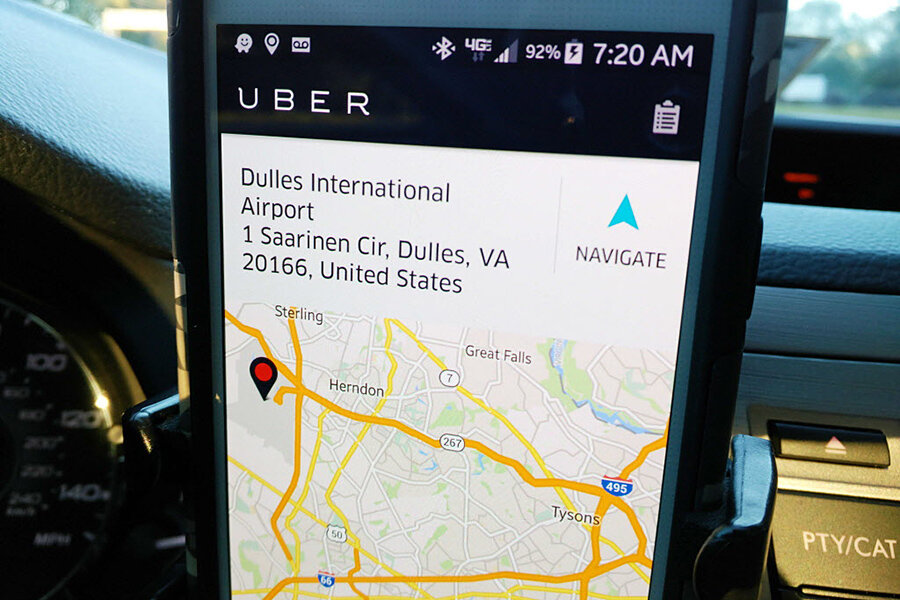Why Uber is testing smartphone tech to track speeding drivers
Loading...
Uber’s driver and passenger ratings system has long been a feature that generated praise from some users of the ride-hailing service and divided others – particularly drivers who say they’ve been unfairly kicked off the service.
Now, the company wants to use sensors embedded in smartphones to help solve those disputes.
Using data would allow Uber to better verify passenger complaints about a particular ride, allowing the company to examine small movements or track if a car is stopping or starting suddenly, which could indicate actions like tailgating another driver.
“Gyrometers in phones can measure small movements, while GPS and accelerometers show how often a vehicle starts and stops, as well as its overall speed. If a rider complains that a driver accelerated too fast and broke too hard, we can review that trip using data,” wrote Joe Sullivan, Uber’s Chief Security Officer, in a blog post on Tuesday announcing a pilot program of the technology.
“If the feedback is accurate, then we can get in touch with the driver. And if it’s not, we could use the information to make sure a driver’s rating isn’t affected,” he added.
The company began testing the program in Houston in late 2015, monitoring the actions of a small number of drivers, the Guardian reports.
But Uber – which says it has provided 1 billion rides by the end of 2015 – has also attracted attention for its business practices, including its use of surge pricing – momentarily increasing prices when the demand for cars in popular locations has outstripped the supply of drivers.
While the company says tracking drivers’ movements could help ensure all rides are safe, the policy could be more of a mixed bag for people who drive for the service, which is now available in more than 300 cities around the world.
Many Uber drivers, whom Uber considers independent contractors, not employees, have been fighting for additional benefits, including the right to unionize, in a series of long-running court battles.
“Is this positive for drivers? Maybe. This depends on how you feel about surveillance, especially in a power dynamic where Uber holds all the cards,” says Christo Wilson, a computer science professor at Northeastern University, who examined Uber’s surge pricing methods in a study published last month, in an email to the Monitor.
“There may be cases where customers make false claims against drivers (e.g. ‘he was driving erratically and now I don't want to pay’), but it’s not clear that this kind of fraud is widespread enough to justify the data collection,” he adds.
In its initial pilot efforts, Uber didn't explicitly inform drivers they were being tracked. Instead, the company notified drivers they were being monitored only if it needed to access their data after a complaint was filed, the company told the Monitor.
Uber’s privacy statement gives the company access to drivers’ geolocation data. But tracking drivers' trips on a regular basis would be a more experimental approach.
“They know we’re trying to make the product better,” Mr. Sullivan told the Guardian. “Drivers are used to us doing experiments in different contexts.”
Uber is also attempting to tackle the issue of assaults on drivers by sometimes-drunken passengers by offering passengers a distraction – some cars in Charlotte, N.C., will now include a colorful, noisy, 1990s-era children’s toy called a Bop It in the backseat for riders to play with, Sullivan said in his blog post.
In Seattle, the company is also encouraging drivers to install rear-facing mirrors, citing a psychological principle that seeing themselves in the mirror might encourage passengers who are intoxicated to self-modify their behavior.
While the new smartphone data could be useful in helping Uber crack down on drivers who are texting while driving or speeding – which the company says is its key aim – the data collection also raises privacy concerns, Professor Wilson argues.
“In my opinion, this whole thing is just an excuse to justify additional data collection from drivers,” he writes, noting that Uber has also purchased a mapping platform developed by Microsoft to reduce its reliance on data from Google Maps.
“This may also play into Uber's self-driving car ambitions, where extremely accurate mapping data is critical,” he adds.
The company has been exploring the possibility of replacing human drivers with autonomous vehicles, but Uber head Travis Kalanick said last year that it could be “five, 10, even 15 years” before there are self-driving cars that are completely safe.
The company argues the sensor-driven tracking is an incremental step in increasing safety.
“Road safety is a critically important issue. It’s why Uber is always on the lookout for new ways – from the simple to the sophisticated – to do better,” wrote Uber’s Sullivan.





